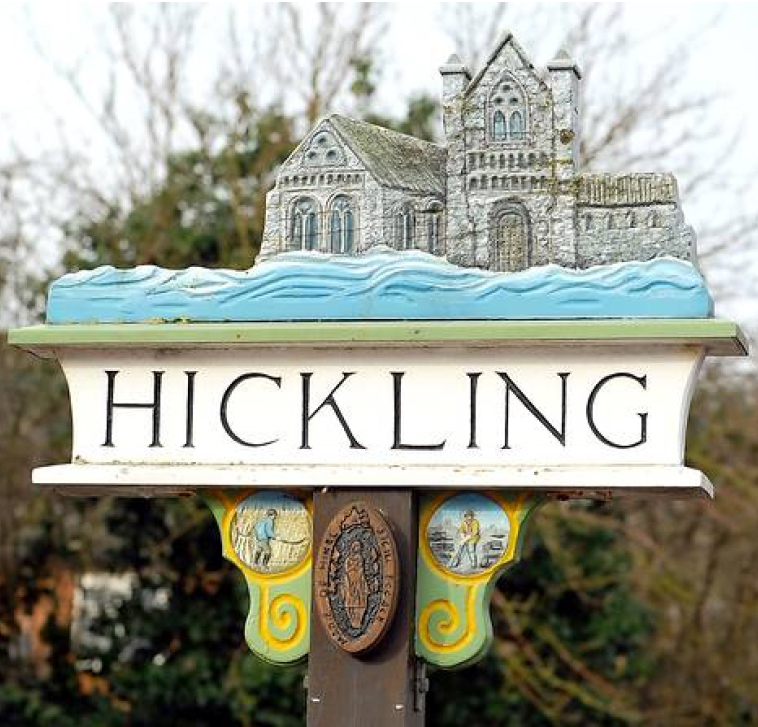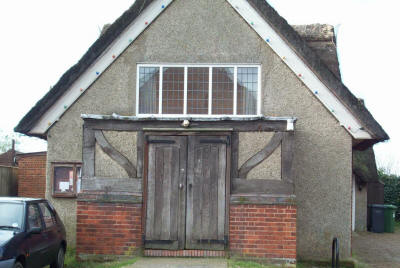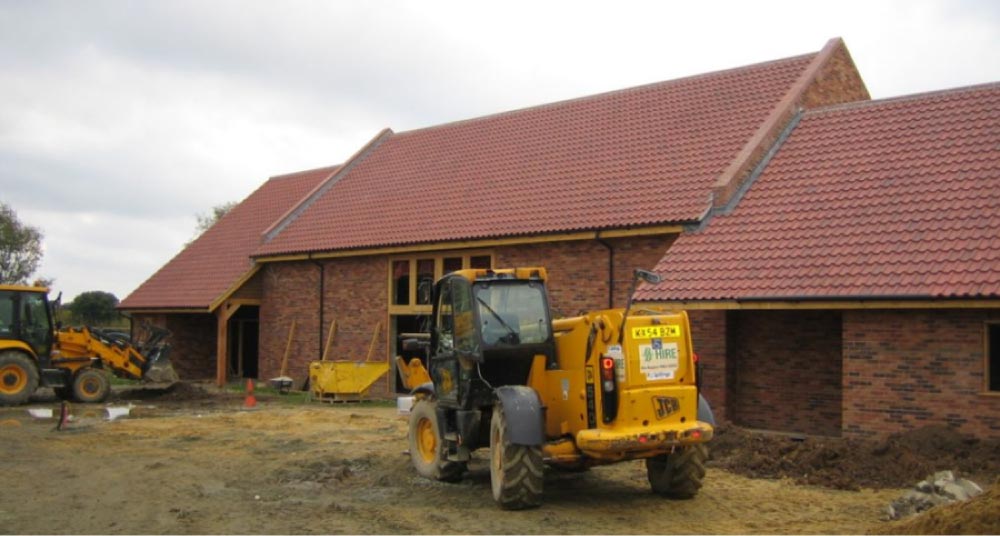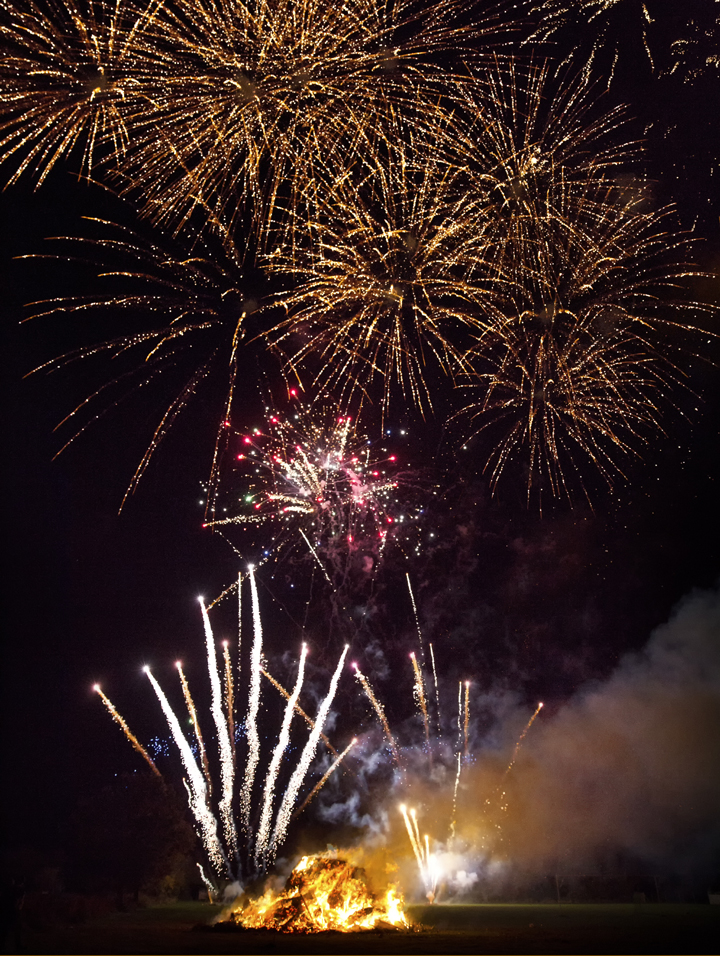HICKLING has a long and fascinating history, extending for more than a thousand years. William the Conqueror's Domesday Book, 1086, refers to the Village as Hikelinga, and mentions a Church being here - noting that Godwin, a free man of Edric of Laxfield' s, held Hickling before 1066.
Hickling Priory, some distance from the Parish Church towards Sea Palling, was founded in 1185. The Priory was granted a Charter by King John, in 1204, to hold a weekly market. The market took place near St. Mary's Parish Church for some five hundred years. (The Priory ruins are on private land and are not open to the public.)
The building of the present Parish Church began in the early twelve hundreds. Work continued into the next century, with later additions and restorations. In 1287 a great flood engulfed the Village, and 180 people were drowned. The waters rose a foot above the high altar of the Priory Church. Less than a century later, in 1349, the Black Death struck. At the Priory only two of the Canons were left alive, and more than half the population of the Village must have died.
A Hickling Local History Group was established in June 2000 to promote a greater knowledge of the history of Hickling but disbanded in 2009. You can find a wealth of further information about the history of Hickling at their site Visit Hickling History
St Mary's dates from the thirteenth century, rebuilt upon the site of an earlier building by the Canons of Hickling Priory. Built of stone and, outside, of knapped flint; having five bays in the nave and a ninety-foot tower housing five bells. The bells are regularly rung and are believed to be the fourth heaviest set of five in the World.
The present Church has undergone much change, perhaps particularly at the Dissolution of the monasteries in the sixteenth century; and during major internal 'restoration' in Victorian times, when the chancel screen, box pews, west-end gallery, and triple decker pulpit were removed.
The octagonal Font is of the fourteenth century. On the stern are four traceried panels, and four with leaves; the same pattern recurring on the bowl. A board near the north door lists the Priors of Hickling Priory from 1185 to the Dissolution, with the Vicars of Hickling from 1340.
The chest tomb at the east end of the north aisle is understood to be that of Sir William Wodehouse, to whom the Priory lands were granted by the Crown in 1542, and who died in 1571. The plaque in the Chancel to John Calthrop (Calthorpe), who died in 1688, and described by Pevsner as "a reassembled piece attributed to William Stanton".





1086....... A Church, with 20 acres, is listed in the Domesday Book.
1185....... An Augustinian Priory, some half a mile from the Parish Church, was founded by Theobald de Valoins.
1204....... The Priory’s foundation was confirmed by King John, who also granted a Friday market to the Priory.
1209....... About this time, and certainly during the first half of the thirteenth century, the present Parish Church (then called All Saints) was begun.
1287....... In a violent storm, in December, the sea burst in, no fewer than nine score people being drowned in Hickling.
1349....... The Black Death struck, and many villagers died. Two Priors succumbed to the plague on successive days and eventually only two Canons were left
alive. One of these, a novice, was elected Prior.
1400....... The bell tower of the Priory collapsed.
1536....... Religious houses throughout the kingdom, including Hickling Priory, were dissolved under Henry VIII. Henceforth the Parish Church is called
St Mary’s.
1542....... The Priory was granted by the Crown to Sir William Wodehouse.
1568....... The present chalice (inscribed ‘This Cup is for the Toune of Hicklynge’) and cover were presented and first used.
1653....... The Church Registers – of baptisms, marriages, and burials – are complete from this date, and are now held at the Norfolk Record Office.
1700....... Hickling Hall, to the north-west of the Church, was built.
1825....... The last remaining window of Hickling Priory was taken down. Over the centuries the Priory had decayed and had been used as a
quarry for building stone.
1834....... Foundation of the Primitive Methodist Society in Hickling. Later there were Primitive and Wesleyan Methodist chapels in the Village.
1849....... The Vicarage (‘The Old Vicarage’ opposite the Church) was built by the Rev. Sotherton Nathaniel Micklethwait, at a cost of £1,400.
1860/1..... Hickling Diocesan School, now Hickling Church of England Voluntary Controlled School, was built (cost £420); and enlarged in 1874 and 1886.
1875/6..... The chancel and nave of the Church was restored at a cost of £2,450, largely paid for by the Vicar, the Rev. Micklethwait.
1879....... The School House was built at a cost of £300 paid for by H.N.S. Micklethwait Esq., Patron of the Living.
1882....... The Primitive Methodist Chapel (the present Methodist Chapel) was rebuilt.
1883....... The Wesleyan Methodist Chapel, near the present Rest Homes, was rebuilt. It has since been demolished, the Deed of Union having brought the
two Methodist congregations together.
1910....... The Church Hall was built, and later sold in 1975 to Hickling Parish Council. It is now the Community Hall, near the School.
1932....... Consecration of Burial Ground Extension at St. Mary’s by the Bishop of Norwich.
1974....... Hickling Village Sign was erected and unveiled, (incorporating representations of Hickling Priory, the crafts of reed cutting and peat digging, and
the swallowtail butterfly and the bittern). The base was built with flint stones from the north wall of the churchyard.
2003....... Publication of “St. Mary’s Churchyard Survey”, and new “Visitor’s Guide to St. Mary’s Church” by Hickling Local History Group.
2004....... Commemoration of the 800th anniversary of the confirmation of the foundation of Hickling Priory and the grant of a weekly Friday market by King
John.
2008....... At the Village School, building works to extend and refurbish the school commenced. These were completed in early 2009.
2010....... The Community Hall is sold to help raise funds for a new Village Hall. The old Community Hall is now a private residence.
2011....... Construction of the new village hall "Hickling Barn" is completed.
2015....... A bitter and costly 4 year legal dispute between the Hickling Barn Trustees and the Parish Council is settled out of court.
2018....... Commemoration of the centenary of the Armistice is held with various activities held across the village ending with a large bonfire and fireworks display on the recreation ground.